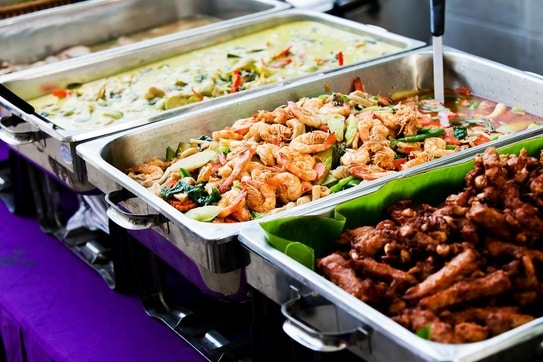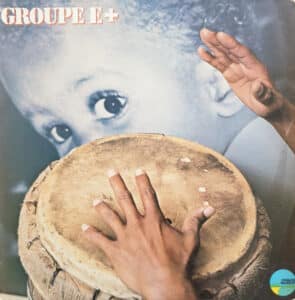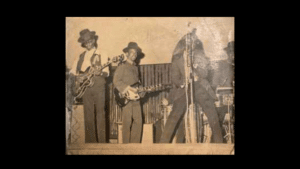French West Indians, if they are hard workers, are not the last when it comes to having fun.
Bons vivants, they find excuse for everything to party and particularly appreciate outings with family or friends, eating, drinking and dancing.
There is a concept that brings all these aspects together in one place: The garden party.
French West Indians love it: not a Sunday, their favorite day, without something like this happening somewhere
Although the garden parties are organized all year round, the period which corresponds to summer in mainland France and which is called in the French West Indies, "the great holidays is the most auspicious and fruitful.
Garden party, country lunches, noon - midnight
If in Guadeloupe they rather use the French term of "champêtre lunch", in Martinique it is the "Garden Party" which prevails, reduced for some to "Garden“.
But both territories use the term “Noon-Midnight“
But what is a French Caribbean-style garden party?
Historically in Europe, a country meal is usually taken on the grass and communally.
As for the country party, it was a form of elegant entertainment quite popular in the 18th century, where those invited were entertained by orchestras scattered in nature.
In the French Caribbean context, it is a secure place, a lunch-dancing evening with an orchestra playing live, organized in a pleasant place, outside or opening onto the outside .
Origin of garden parties
Garden parties began to emerge in the early 2000s, when 35-55 year olds no longer felt comfortable with an increasingly young clientele in discotheques.
Anti-noise laws, neighborhood problems, SACEM regulations, various incivilities and fights have made it more and more complicated to organize zouk evenings at home.
Finally, this same age group no longer had the desire or the strength to party until dawn, come home late and wake up tired.
The garden party allows you to go to work the next day in great shape.
Garden parties have since dethroned the zouk evenings of yesteryear in private homes or discos.




Multiple forms of garden parties
When?
Although Sunday is the most frequent day for the garden party, it can also take place during the week.
When?
There is the Midi-Minuit which, as its name suggests, begins at noon and ends at midnight. This is the most popular form.
25-45 year olds prefer what they strictly call “Garden Party“, which starts around 4 p.m. and ends around 11 p.m..
Where?
In a natural environment: In the countryside, on the banks of rivers or the sea
Pleasant habitat: beautiful Creole hut or villa with swimming pool or "cosy" restaurant, " trend", in a refined setting.
By who?
The initiative can be individual, associative or come from event professionals.
From a simple family and friendly reunion, through associative and sporting events, to major events draining masses of people.
How?
It often happens that there is a dress code or a theme for the event. The greatest number submit to it with pleasure.
Eat well and drink well
Attention, serious subject!
Catering is important because French West Indians like to eat well and have a well-honed palate.
As a menu or buffet, the meal is always copious, even if it is varies from the simplest to the most gourmet.
The local cuisine is well highlighted, as is the international gastronomy.
We also drink a lot of all kinds: rum, beer, fruit juice but above all champagne!
Let’s not forget that Guadeloupe and Martinique are the biggest consumers of champagne in the world…
Often, in the most upscale parties, the organization requires that the "guests" bring back this or that brand of champagne and high-end please!
Live music and DJ
The characteristic of a garden party/country lunch is the performance in showcase or concert of artists.
Whether it is a single artist or a group, big size or not, this is what determines the purchase and reservation for the event.
Here, it's the reign of live: we like to see and hear the musicians play and we like to dance to their performance, while eating, playing dominoes, joking with friends or watching her children.
Acoustic or guitar-voice formulas, or trio/quartet formations are frequent, depending on the desired intimate atmosphere of the garden. They are also more convenient to set up.
But that does not prevent the "big" sound that gives off, the big bands of yesteryear or of the moment that bring people back.
One or DJs, sometimes among the most popular in the region, provide the sets between the live performances.
More simply, the small family or associative garden, not necessarily having the means to afford an artist or a group, will function only with a sound system and a "house" DJ.
Even if all types of music lend themselves to the concept of a garden party (jazz, lyrical, salsa, reggae-dancehall, etc.), what is most appreciated and gets people dancing is still zouk and konpa muqic.
Purists will demand 80s-90s zouk and 70s konpa music.
At all prices
From 30€ until reaching the stratosphere, depending on the purse or the claims of each. To show off, even the least well-off are ready to spend a lot of money….













